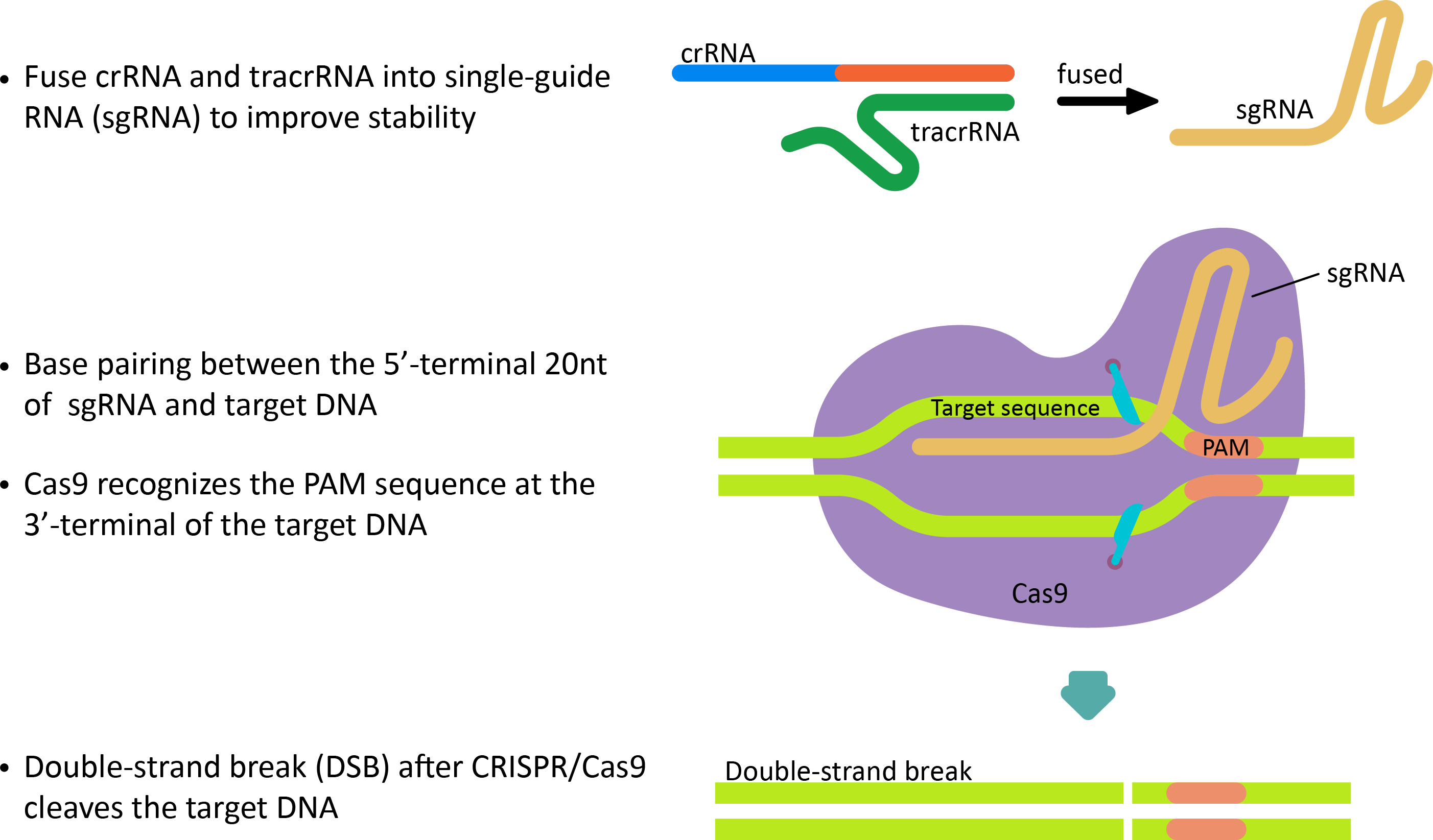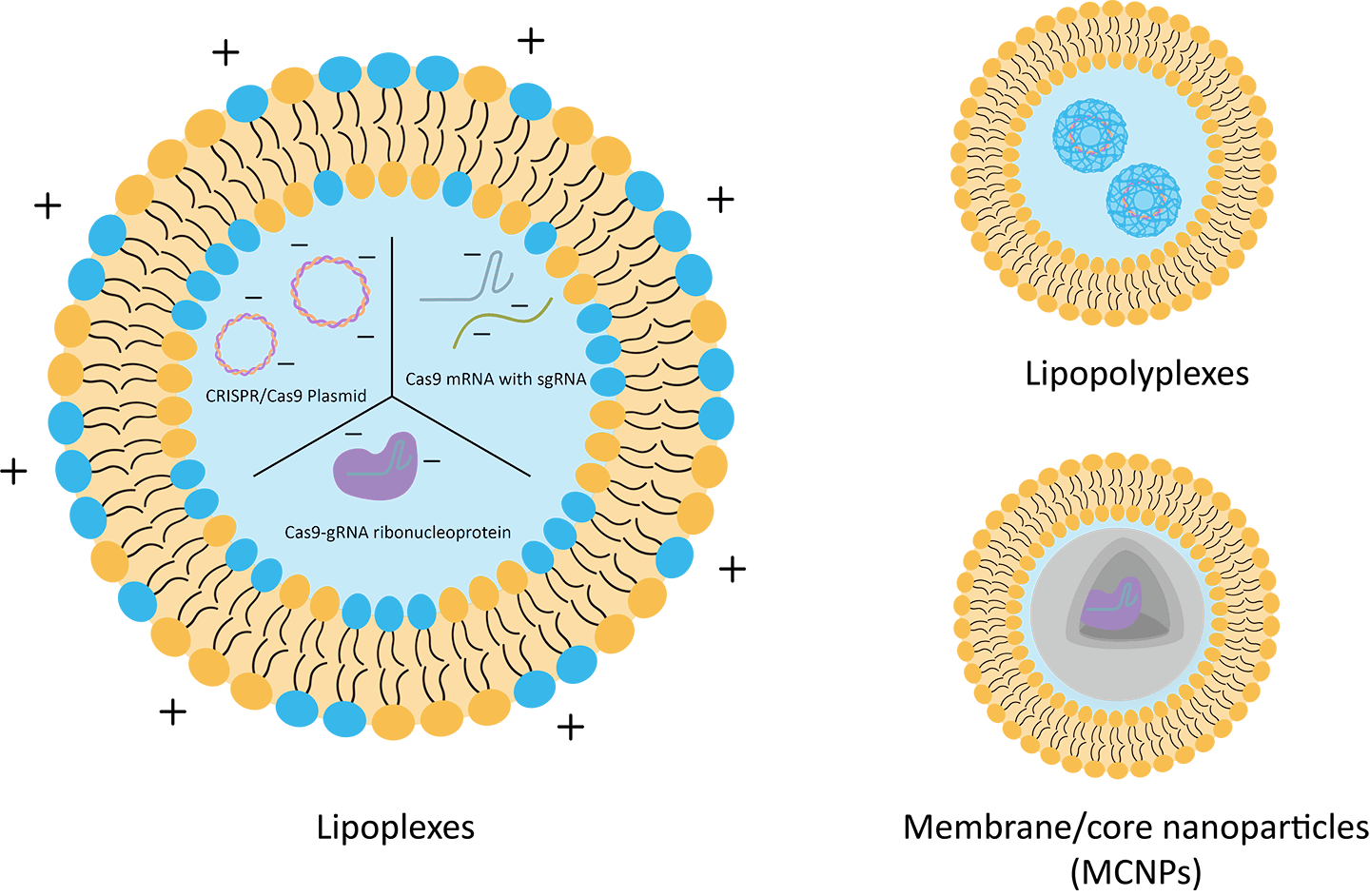The clustered regularly interspaced short palindromic repeat (CRISPR) and CRISPR-associated (Cas) system is a revolutionary genome-editing technology that has become a powerful tool for scientific research. Liposomes are one of the most widely investigated carriers for the delivery of gene-editing tools. The vesicular structure, biocompatibility, and adjustable surface properties of liposomal carriers can effectively deliver proteins or nucleic acids into the target cell and improve gene silencing efficiency. As a leading liposome contract manufacturer, Creative Biolabs provides one-stop solutions for liposomal gene-editing research. Our ground-breaking research, objectified working processes, and state-of-the-art equipment all mean that we can develop distinctive liposomal formulations and products according to your requirements.
The development of new gene-editing techniques provides promising strategies for the treatment of genetic diseases and other complicated diseases. Among them, the CRISPR technique appears to be the most suitable for preclinical and clinical applications compared to the others due to its high gene editing efficiency and simultaneous multiple loci editing. However, several barriers limited the direct use of CRISPR in gene therapy. For example, proteins or nucleic acids could be digested by endonuclease in the serum, and the anionic DNA/RNAs would reduce the cell uptake efficiency due to electrostatic repulsion.
 Fig 1. Gene Editing of CRISPR/Cas9 system. (Creative Biolabs)
Fig 1. Gene Editing of CRISPR/Cas9 system. (Creative Biolabs)
Among the existing delivery carriers, liposomes with characteristic lipid bilayers that resemble the cell plasma membrane are the most widely studied gene carriers due to their excellent biodegradability and biocompatibility. In the liposomal CRISPR delivery system, many parameters including size, surface charge, PEGylation, and targeting ligands can be adjusted as needed. Moving forward, liposomes will deliver their promise for further applications providing their serum stability, higher endosomal escape, and transfection efficiency.
As an ideal drug delivery carrier for gene editing, liposomes are modified to improve gene delivery efficiency. The related parameters include particle size, surface charge, PEGylation, targeting ligands, lipid structures, the type of gene-editing tools, etc. Accordingly, the gene-editing liposomes are categorized into several types by their structures and cargo. Lipoplexes are cationic liposomes with high accessibility and stability, they are already commercially available and have been widely used in in vitro gene delivery studies. To improve the encapsulation efficiency of CRISPR/Cas9, lipopolyplexes or membrane/core nanoparticles (MCNPs) is formulated with polymer/CRISPR/Cas9 complexes or CRISPR/Cas9 loaded inorganic nanoparticles inside the bilayers.
 Fig 2. Different liposomal structures for CRISPR/Cas9 delivery. (Creative Biolabs)
Fig 2. Different liposomal structures for CRISPR/Cas9 delivery. (Creative Biolabs)
Creative Biolabs provides one-stop custom services for liposome-based drug delivery research. Our liposome expert team is experienced to design & prepare liposomes according to your requirements and offers experimental schemes that cover every stage of gene editing. For more details about our services, please contact us directly.
 For Research Use Only. Not For Clinical Use
For Research Use Only. Not For Clinical UseApplications
Online Inquiry

